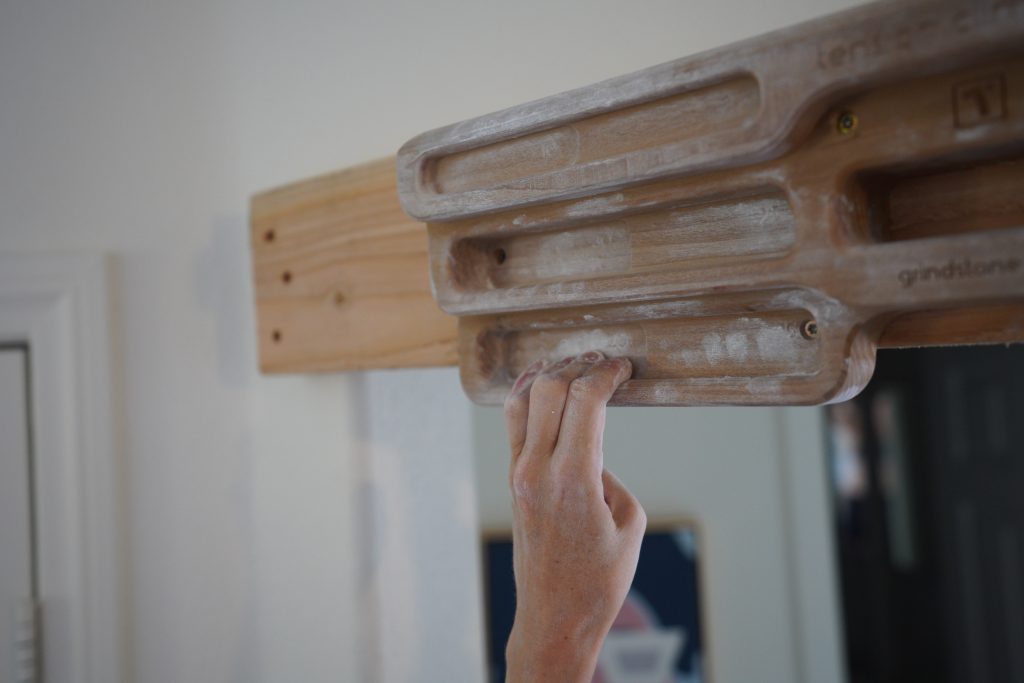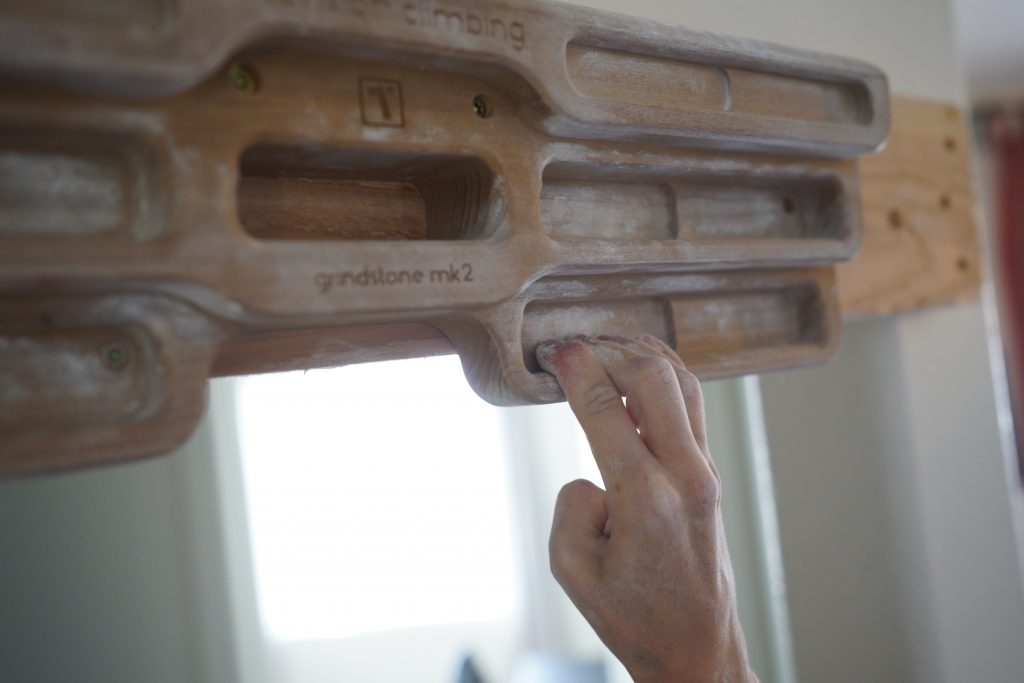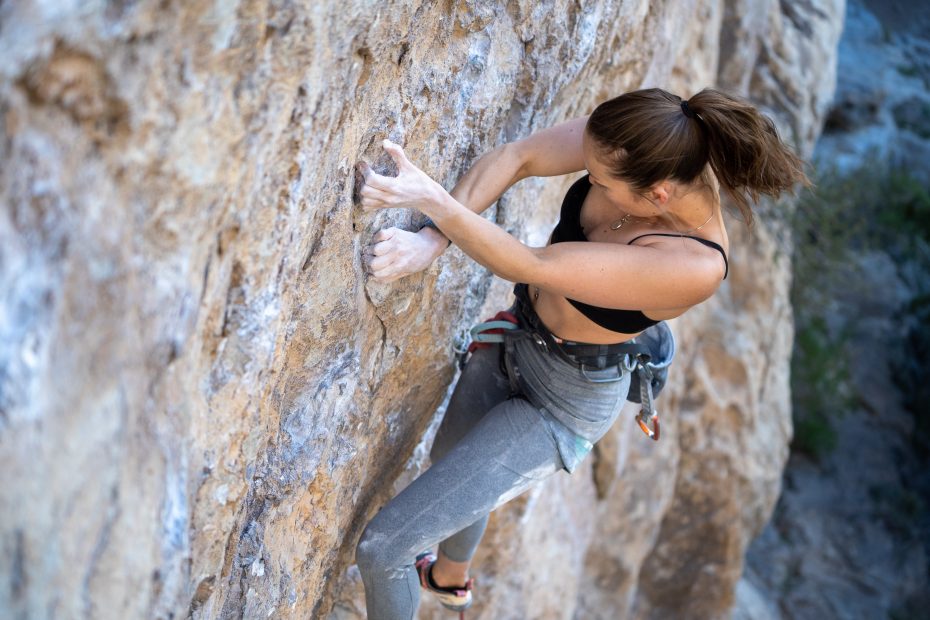The whole premise of this blog is to cover soft skills – the little discoveries that make climbing easier and aren’t always spoken about.
Here’s an example that I’m pretty sure everybody can relate to. Remember being a total noob and learning to pull on holds in the direction that makes them the best, instead of just down? Like, say, pulling sideways on a sidepull – as opposed to just grabbing the thing, pulling down on it, and getting nowhere. I vividly remember this discovery and the immediate improvement after.
That leads me into today’s topic: grip positions – or more specifically, crimp positions. Get ready to laugh at me for being a dumb dumb. Seriously.
Holding holds is… complicated
In the time I’ve been climbing, I never really experimented that much. I basically grew up with the internet: you don’t figure things out on your own, you just Google them, right? Not necessarily. The Google-above-all approach worked for me for a long time. The internet taught me how to do my first pull-up, and the physics of lead belaying. I learned how to bicycle, and what a pogo is. Here’s what I didn’t learn: how to half crimp.
Say what? You didn’t know how to crimp?
I knew how to full-crimp, and I knew how to open-hand. I just never really experimented with anything in between – like possibly the most helpful grip of all: the half crimp.

The problem with learning things via the world wide web is this: everybody needs to learn different things, and the things you need may or may not be online. Basically, the internet never told me to experiment with grip types, so I never did.
I managed to send seven 5.12 routes without half crimping.
But something didn’t make sense. I’m quite tall, quite light, and quite flexible. You’d expect me to be good at crimp lines, especially gently overhung ones with incut crimps. (Small fingers get more purchase on small holds, and flexibility allows hips to stay close to the wall.) People my shape and size would dance up these things, and I would just get shut down over and over again. Maneater – a 12a at Red Rock – was one of the hardest routes I had ever touched. I could barely do a single move on that thing. And yet, multiple people left comments on 8a.nu saying it was a one-move wonder. I couldn’t even get to the crux, let alone try it.

It probably seems outrageous that it took me so long to figure this out. And yes, I would have liked to figure it out sooner. But I’m writing about it so other people can learn from my mistakes. We all do silly things – and I’m the queen of missing really obvious stuff.
If things aren’t adding up, keep searching
To make things even more confusing, I could do repeaters on a 15mm edge with added weight. But I could never hang on a 10mm edge. I couldn’t even begin to remove weight from my feet – if I stood on a scale and pulled on a 10mm edge, the number would not change. I used to think I just wasn’t strong enough. But then as time went on, that made less and less sense.
I watched people hang on that edge and noticed the bend at their first knuckle – a.k.a. a half crimp. My knuckles had no such bend – I was trying to hold the edge open-hand. I tried to replicate this bent-knuckle half-crimp position but I couldn’t. I tried it on a 15mm edge, then on a 20mm, a 25mm, and a 30mm to no avail. Yep: I could not hang body weight on a 30mm edge in a half crimp. Suddenly, everything made sense.

This became priority number one. As part of my hangboard warm-up each session, I used a resistance band to take weight off (I didn’t have a pulley system), and I hung on a 30mm edge, then 25m, 20mm, and so on. After about eight weeks, I could hang body weight on a 10mm edge. This is a very quick progression, which is because I’ve been climbing for a while and have trained my fingers before. I just had to teach my brain how to use my fingers in a new way (i.e. I didn’t get much strength gains in eight weeks, they were almost all mental).
The moral of the story
Turns out half crimping is very useful. Roof problems at the gym became about ten times easier. Actually, everything became easier. But you probably know how useful half crimping is – I’m sure you’re already doing it. The moral of the story is this: there might be something else you’re missing that you don’t know about.
Maybe you’re not using your hamstring when you heel hook, or maybe you’re not pulling with your toes on incut edges, or maybe you’re holding slopers wrong. The possibilities are endless, really.
If something doesn’t add up, investigate it until you find an answer that you’re happy with. If you can’t do a move that other people your ability level can easily pull, or if you’re bad at something your physiology should help you to be good at, or any number of other things, experiment. I find that I always know on the inside that I’m missing something – it’s just hard to figure out exactly what that something is. But the juice is worth the squeeze. Seriously.
Image credit: Ryman Wiemann
